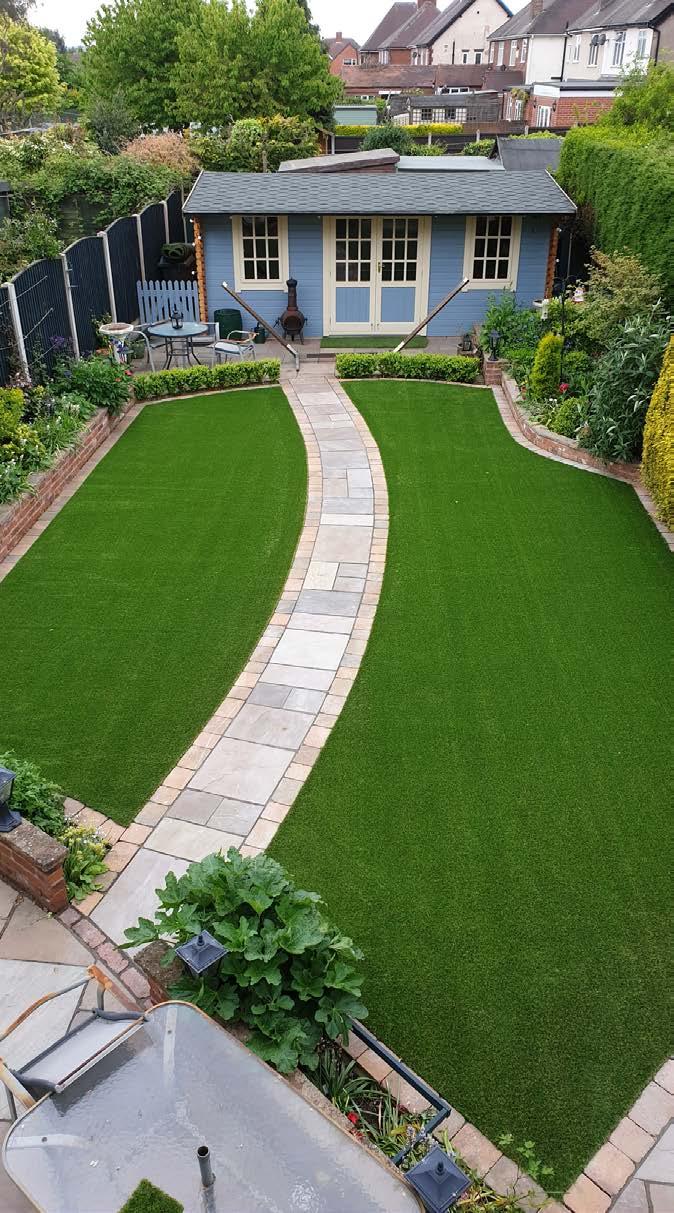
3 minute read
Choosing a lawn that looks
WHY GOOD QUALITY ARTIFICIAL GRASS PROVES THE GRASS IS GREENER ON THE OTHER SIDE ARTIFICIAL GRASS
Artificial grass is a fantastic hasslefree investment, but not all grass is created equal and for the untrained eye, picking a good quality product can be difficult task. Adrian Buttress, managing director at PermaLawn, discusses the difference between cheap and high-quality artificial grass options and explains why it’s worth investing upfront for long-term benefits.
It’s inaccurate to only compare price when choosing products – and artificial grass is no exception to the rule. Cost comparison in any industry is always on a like-for-like basis. However, in the grass market, that difference is far more than simply pile height and price.

When something is cheaper, it’s usually because you are getting less product. There is only so far you can go when cutting production costs before you start hitting problems. For example, while it all looks the same when it is brand new on the roll, that will change once the artificial grass has been exposed to the elements.
Cheap products may have that unbelievably tempting price, but if it starts failing sooner than you think, it actually becomes a very costly investment for the homeowner and a reputation-damaging project for the contractor or landscaper.
Choosing a lawn that looks realistic and stands the test of time
Like most things, manufacturers can take shortcuts in the production process to save themselves time and money, which allows them to offer their artificial grass at a lower price than their competitors.
However, it’s important to remember that these cheap prices only come by sacrificing quality.
To help you avoid purchasing an artificial grass you may regret installing in the future, there are a few key signs you can look out for to help you spot poor quality products – and ensure you can enjoy the many benefits that having an ever green and ever mowed lawn brings for years to come.

A certain level of yarn loss is to be expected, but it shouldn’t be excessive. The easiest way to test this is to pull the tufts from the middle of your sample – if you get good resistance and no shedding, your product is solid. When enquiring about artificial grass, you should also ask about the stich rate, which is the number of stitches per 10cm. As a general rule of thumb, better quality grass as a higher stitch rate.

There’s more to artificial grass than just the plastic fibres Getting the stock you want, when you want it
The secondary backing material, which tends to be made up of either latex or polyurethane, holds the tufts in place and allows the fake grass to lie flat. One of the keys to a longlasting fake lawn is artificial grass that has been manufactured with sufficiently high quantities of latex.
Generally, artificial grass made in Europe tends to be of much higher quality because of the European Union’s stringent standards and regulations that manufacturers have to comply with. PermaLawn works with a renowned European manufacturer with decades of proven background and experience – ensuring the artificial grass we supply is well worth the money. Many stockists will have to wait up to 12-weeks for a delivery to be imported from the manufacturer, meaning homeowners will need to plan their garden renovations months in advance. However, PermaLawn purposefully sits on 100,000m2 of stock all year round at our headquarters in Derbyshire and deliver just the amount you need for your garden.
Artificial grass is a smart, convenient and aesthetically pleasing solution. And for a lawn that lasts and makes others green with envy, it is worth investing upfront in a quality product.
It’s also important to check the warranty that comes with your artificial grass – some cheaper options will only guarantee the product for five years, whereas PermaLawn products are guaranteed for seven.










